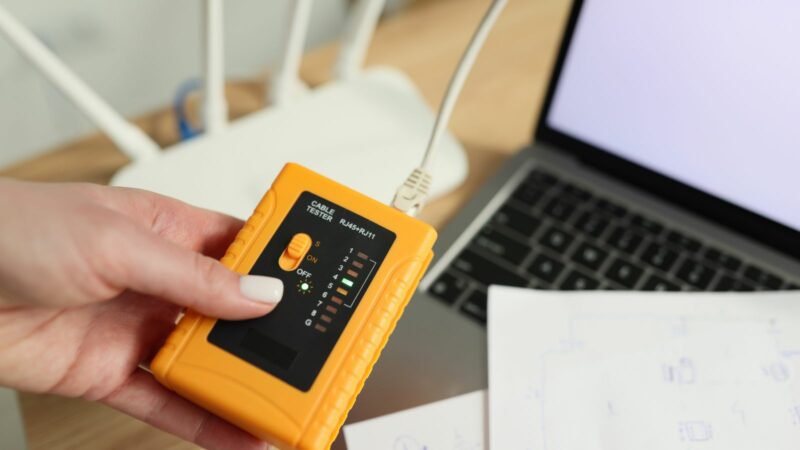If you’re into networking or IT, you know how crucial it is to have a reliable LAN tester on hand. It’s the go-to tool for checking network connections, troubleshooting cable issues, and ensuring smooth data transmission. In the world of networking, a LAN tester is like a trusted sidekick that helps you keep everything running smoothly.
When it comes to diagnosing connectivity problems, a LAN tester is a lifesaver. With its ability to quickly identify faults in cables, connectors, and network configurations, it’s a must-have for any tech enthusiast or professional. Whether you’re setting up a new network or maintaining an existing one, a LAN tester is the key to ensuring optimal performance.
Lan Tester

In network and IT operations, various types of LAN testers are available to cater to different testing needs. I’ll discuss some common types below:
- Cable Testers:
- Cable testers are essential tools used to verify the integrity of network cables by checking continuity, shorts, opens, and miswires. They ensure cables are properly installed and functioning correctly.
- Network Cable Testers:
- Network cable testers are specifically designed to test Ethernet cables, including CAT5, CAT6, and CAT7 cables. They help identify wiring faults, such as incorrect pin configurations, and ensure reliable data transmission.
- Tone Generators and Probes:
- These testers are used to trace and identify cables within a network infrastructure. The tone generator sends a signal through the cable, while the probe is used to detect the signal, making it easier to locate specific cables.
- PoE Testers:
- Power over Ethernet (PoE) testers verify the presence of power and the correct voltage on Ethernet cables. They ensure that PoE-enabled devices, such as IP cameras or VoIP phones, receive the necessary power for operation.
- WiFi Signal Testers:
- WiFi signal testers analyze and measure the strength and quality of wireless signals in a network. They help optimize WiFi coverage, identify dead zones, and ensure a reliable wireless connection for users.
Understanding the different types of LAN testers available can help network professionals and IT technicians choose the right tool for their testing requirements. Each type serves a unique purpose in maintaining and optimizing network performance.
Choosing the Right LAN Tester

When selecting a LAN tester, I consider various factors to ensure I have the right tool for the job. Here are essential considerations:
1. Testing Capabilities
I prioritize understanding the testing capabilities required for my network setup. This includes checking for cable faults, verifying signal strength, testing PoE functionality, or certifying network cables. Each LAN tester type offers specific testing features crucial for different scenarios.
2. Compatibility
I always check the compatibility of the LAN tester with the network equipment I work with. Ensuring that the tester supports the required cable types, network speeds, and standards is vital for accurate testing and reliable results.
3. Ease of Use
I prefer LAN testers that are user-friendly and intuitive. A straightforward interface, clear display, and easy-to-understand test results simplify the troubleshooting process, saving time and effort during network diagnostics.
4. Portability
For flexibility in testing various network locations, I opt for portable LAN testers. The ease of carrying the device to different sites and its ability to perform tests conveniently in different environments are crucial factors in my selection process.
5. Budget Considerations
I always consider the budget constraints when choosing a LAN tester. While seeking a cost-effective option, I balance the price with the required features and quality to ensure I invest in a tool that meets my testing needs without overspending.
By evaluating these key aspects, I confidently select the right LAN tester that aligns with my network testing requirements, budget limitations, and technical preferences, enhancing the efficiency of my network troubleshooting processes.